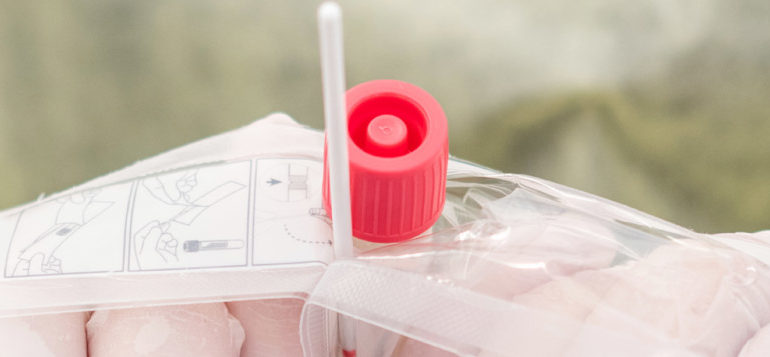Cleanliness of medical devices
Sure, clean and pure – a risk-based credo for all medical device manufacturers.
In our daily work as consultants, we are often asked: “Where is it written? Where can I find the limit values? Which law applies to this?” Manufacturers and their employees hope for clear statements on how they have to fulfill or implement certain requirements.
However, most of the time we have to answer: “For this, the European Medical Devices Regulation EU 2017/745 offers “only” the risk-based approach. There are no clear limits or specifications in the legal text. ” Depending on the individual perspective, this may seem good or bad, because those who develop their products under a sound risk management system have freedom of interpretation here. But in terms of product liability, this freedom can be deceptive and the subjective idea of when a risk is acceptable differs between companies. For an even assessment of risks, one should always take a look at the applicable standards, especially when it comes to the production conditions, the quality of raw materials or, in principle, the product properties. Here, important clues can be found both in the vertical, product-related standards, but also in the horizontal standards, which apply independently of the product. Since this year, the German pre-standard DIN/TS 5343 “Cleanliness of medical devices – Risk-oriented validation of cleanliness, development of acceptance criteria and selection of test methods” has been available on the subject of cleanliness.
Why should you care about the cleanliness of your medical device?
Whenever a medical device comes into direct or indirect contact with patients, users and third parties, there is a possibility of a hazard via germs or hazardous substances, especially if these issues have not been adequately considered by the manufacturer and no measures have been taken.
Germs on products can lead to infections and fever; extractable substances or impurities can cause allergies, poisoning or other health problems. The germ load of the device is therefore a product risk. The manufacturer is required to incorporate EN ISO 10993-1 “Biological evaluation of medical devices – Part 1: Evaluation and testing within a risk management system” into his risk management and to generate corresponding plans and reports. This often leads to a nasty “Oops” surprise, when one realises that a decent amount of contamination is present on the product and one’s own sheet is not as clean as thought. The process has to be unrolled from the end and cleaned up in the truest sense of the word.
Avoid contamination on the medical device from the start
During development, one of the most important characteristics should be the cleanliness of the medical device – regardless of the risk class of the product. Even a class I or a class II device that does not have to be sterile can pose risks to users, patients or third parties if it has been produced uncleanly. It is therefore important to verify and validate the intended materials, including auxiliary materials and operating materials, as well as the intended production conditions against this requirement already during the development phase. This includes any substances that may remain on the product during production: Adhesives, oils, lubricants, cleaning agents. Also, the nasty surprise won’t happen.
In the case of existing products, it is advisable to deal with these issues within the framework of post-market surveillance. Data on the cleanliness of the products should be collected at certain intervals and evaluated with a view to the defined claim of cleanliness – code word bioburden. After all, your sheets should not only come out of the machine clean after the first wash cycle.
Assistance for manufacturers – the pre-standard DIN/TS 5343
The hope is naturally high that clear values can be found in this standard, but this is not the case. At the same time, the standard points out in its introduction that 100% cleanliness is not achievable. For the implementation of this standard, the manufacturer has to establish his own values, but the standard accompanies him in doing so. Keywords from the table of contents such as “development of a cleaning process”, “validation of cleanliness” and “determination and definition of acceptance criteria for cleanliness” give an idea of where the journey is heading. So how does DIN/TS 5343 help in concrete terms? It brings together aspects from different areas that are often considered in isolation by manufacturers. The topic is embedded in the development process at an early stage and the standard roughly explains the procedure of a validation. Well-known test concepts are called up, for example the bioburden test according to EN ISO 11737-1, bacterial endotoxins in the LAL test or chemical characterisations according to EN ISO 10993-18.
The pre-standard calls for product (group)-related specifications, but at the same time admits that standardised acceptance criteria do not exist for all products. This means that risk-based values have to be determined or searched for elsewhere. One possible source, which is already somewhat dusty but still valid, can be the “RDS 005 Guidance for the Establishment of Minimum Criteria for Microbiological Cleanliness of Medical Devices” from April 2014. Suggestions for bacterial count limits can be found there.
In the case of material contamination, it is also worth taking a look at DIN EN ISO 14644-5:2005 or VDI 2083 Sheet 21 Cleanroom technology – Cleanliness of medical devices in the manufacturing process. The more intensive the contact between the medical device and the user or patient, the cleaner the manufacturing process must be. Contamination is difficult to control, so manufacturers should pay close attention to the raw materials, suppliers and production processes they use.
You are not sure how clean your waistcoat is? Or is there still a “stain” that simply cannot be removed? Talk to us. We will support you in identifying the possible source of contamination and in improving your processes.
Please note that all details and listings do not claim to be complete, are without guarantee and are for information purposes only.




